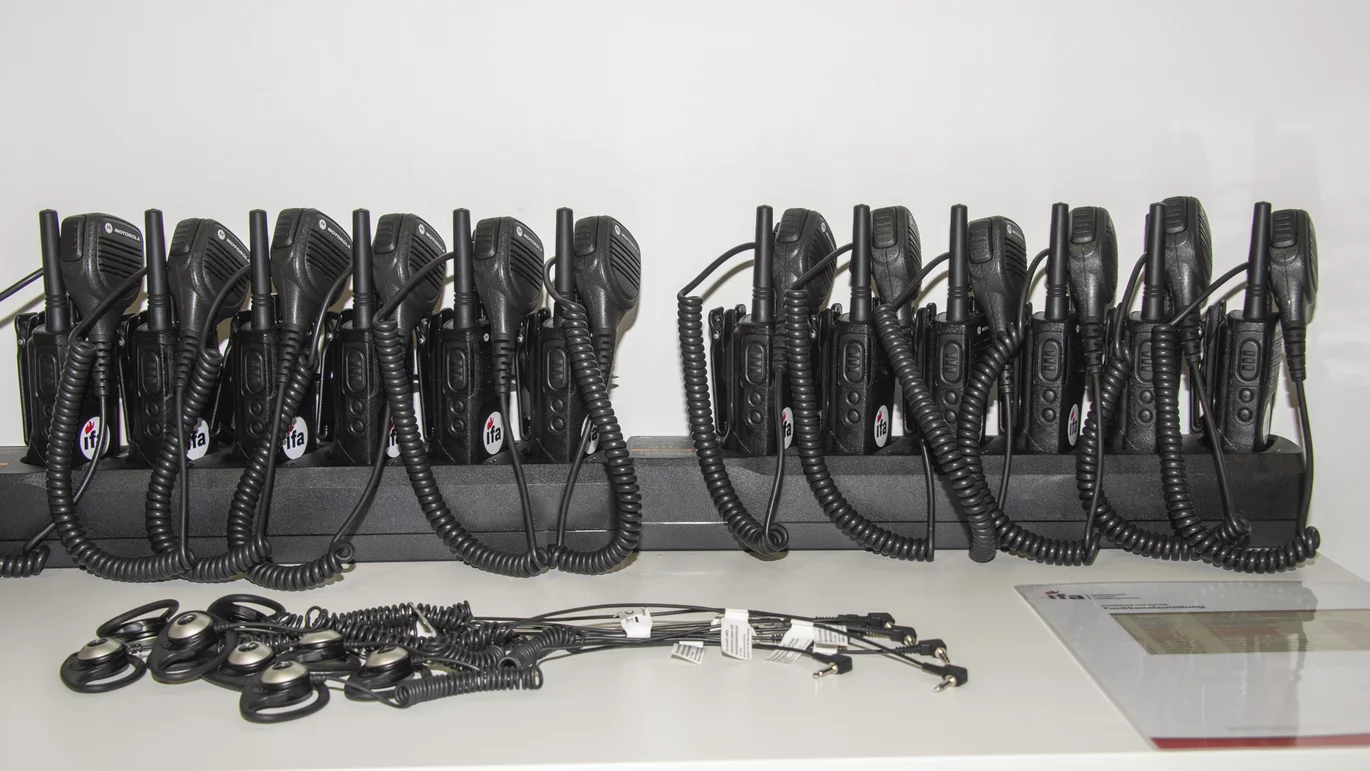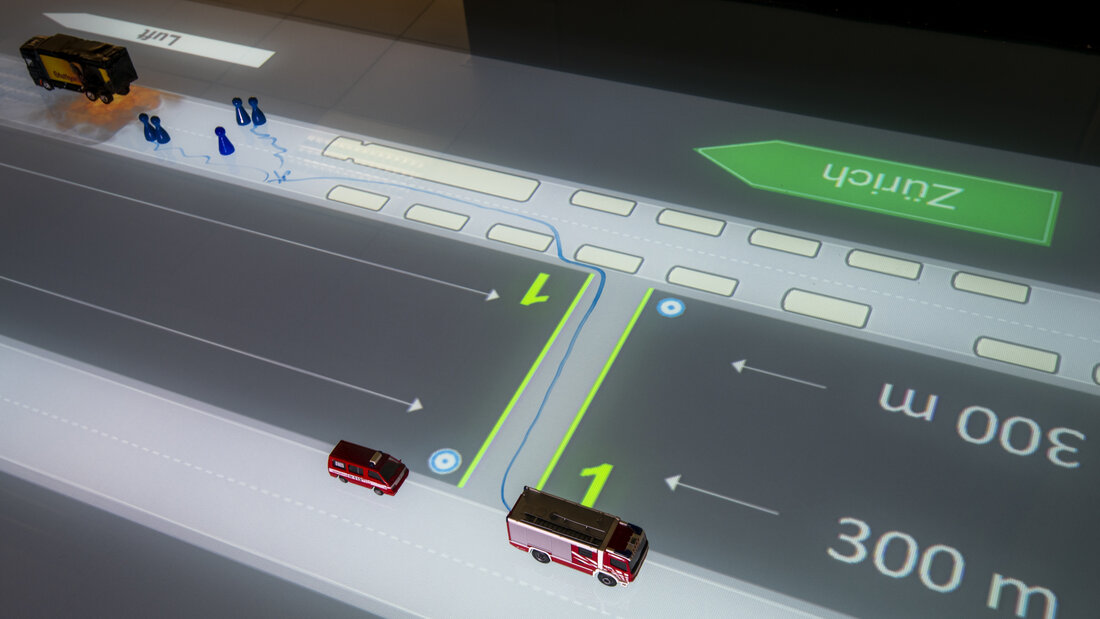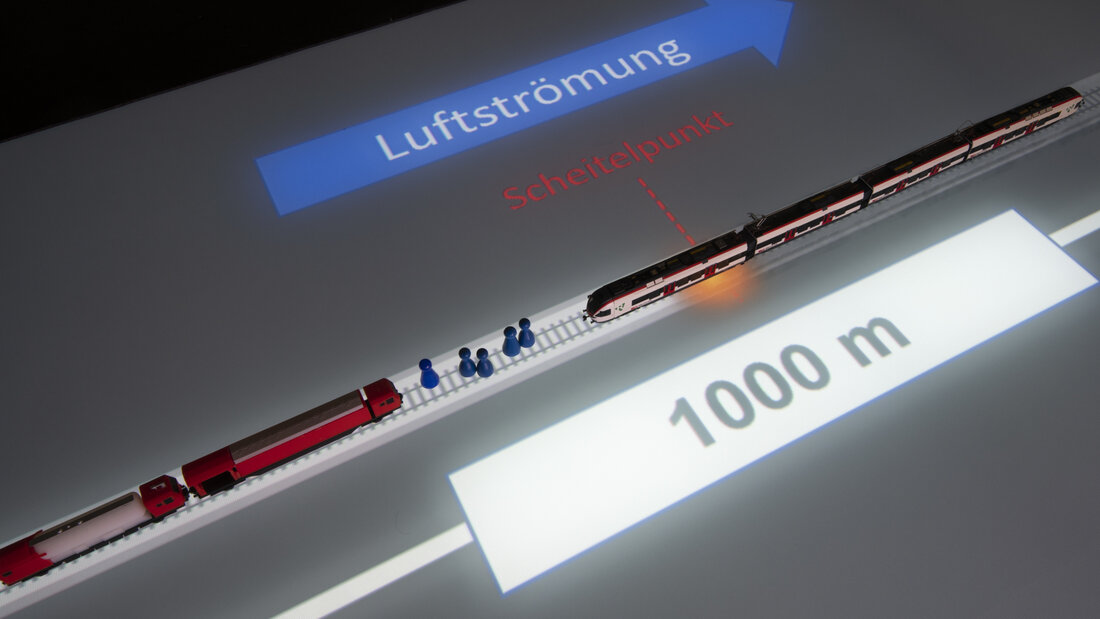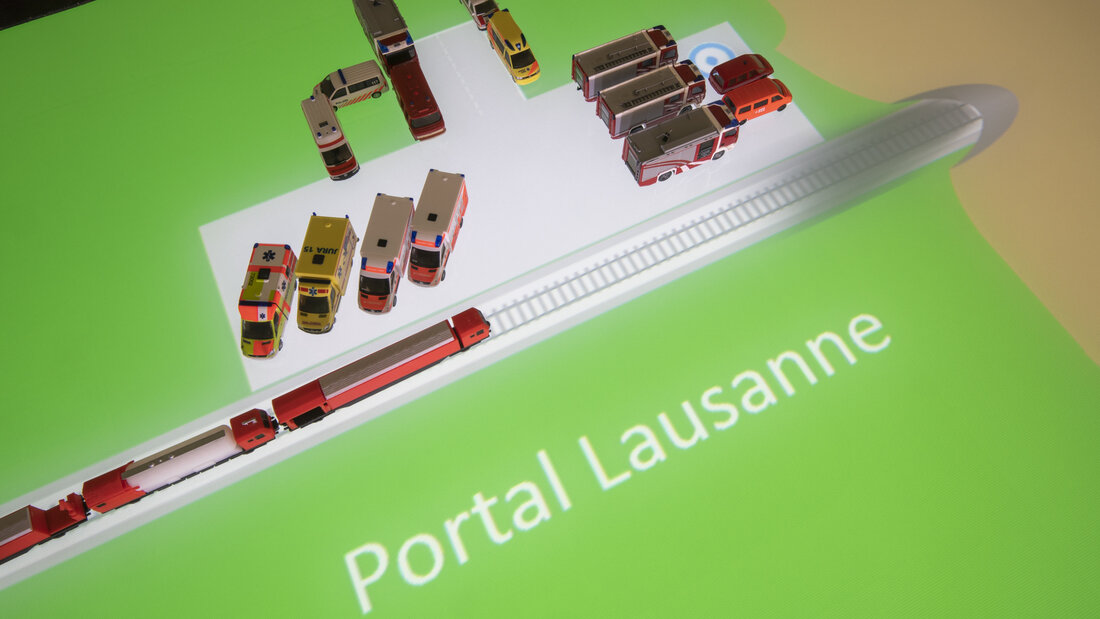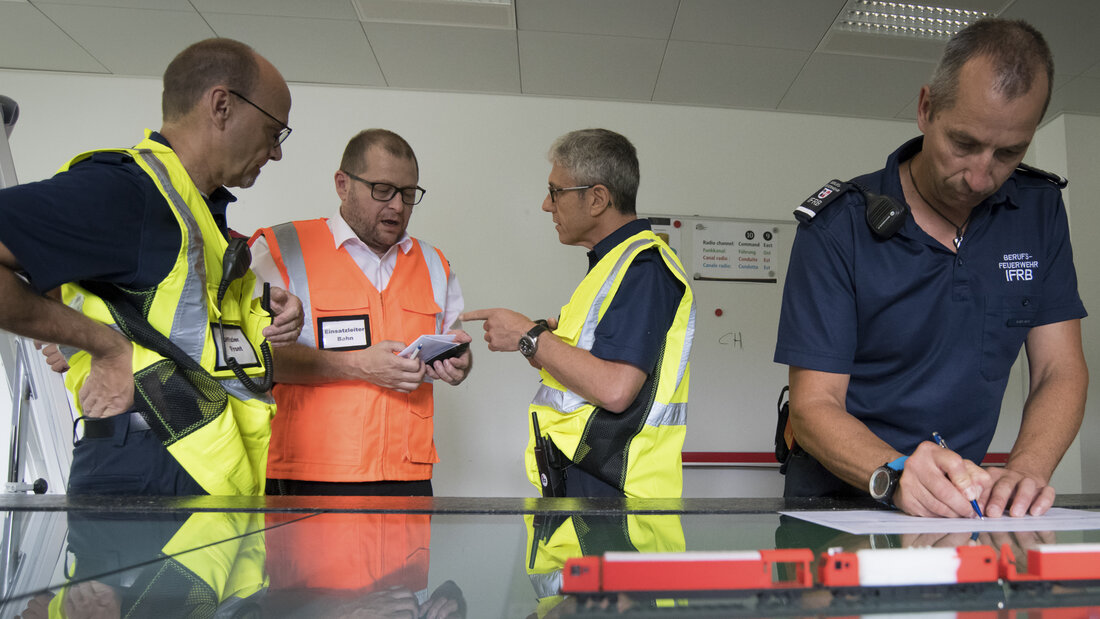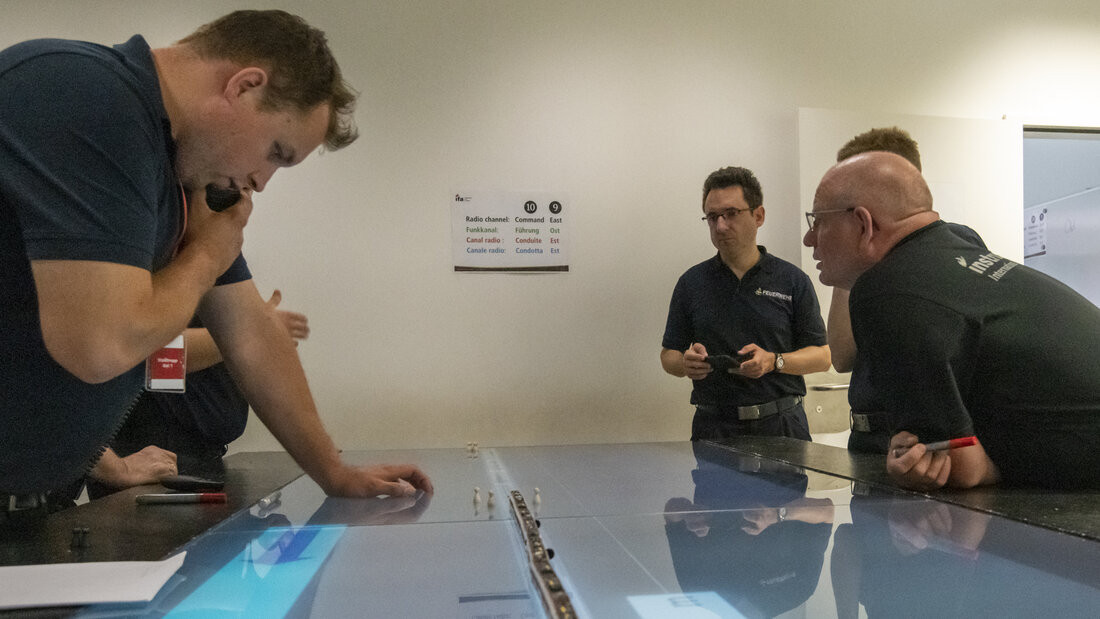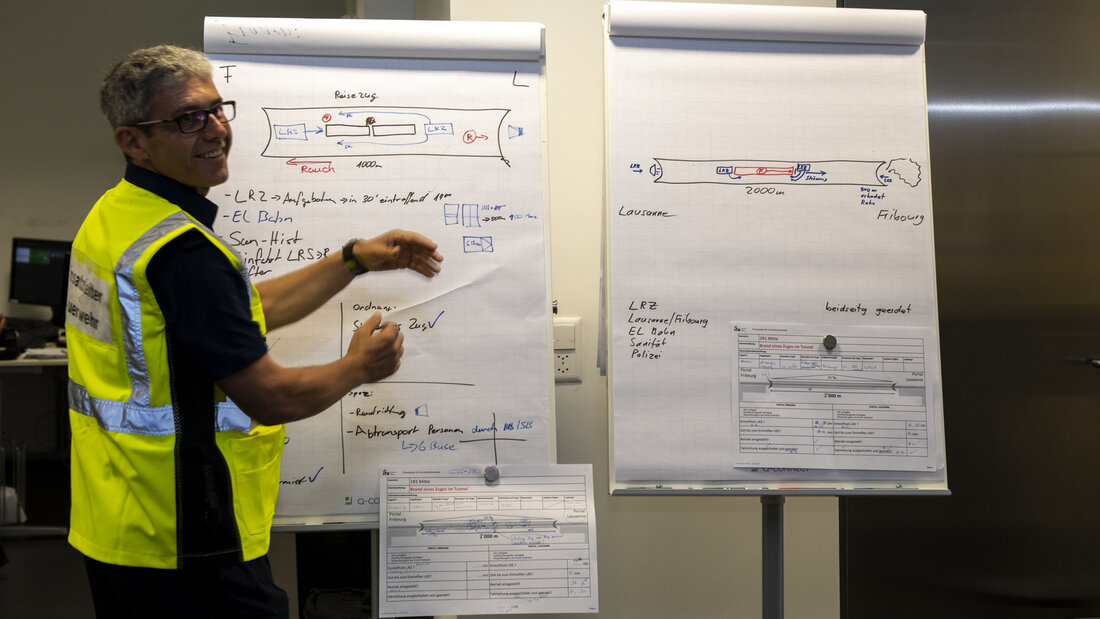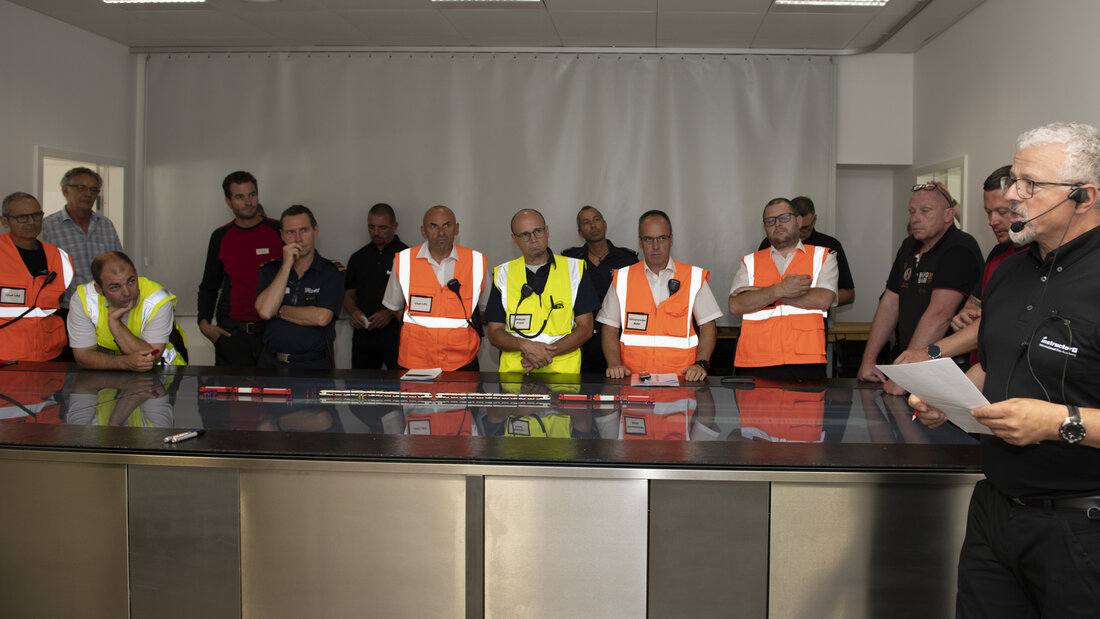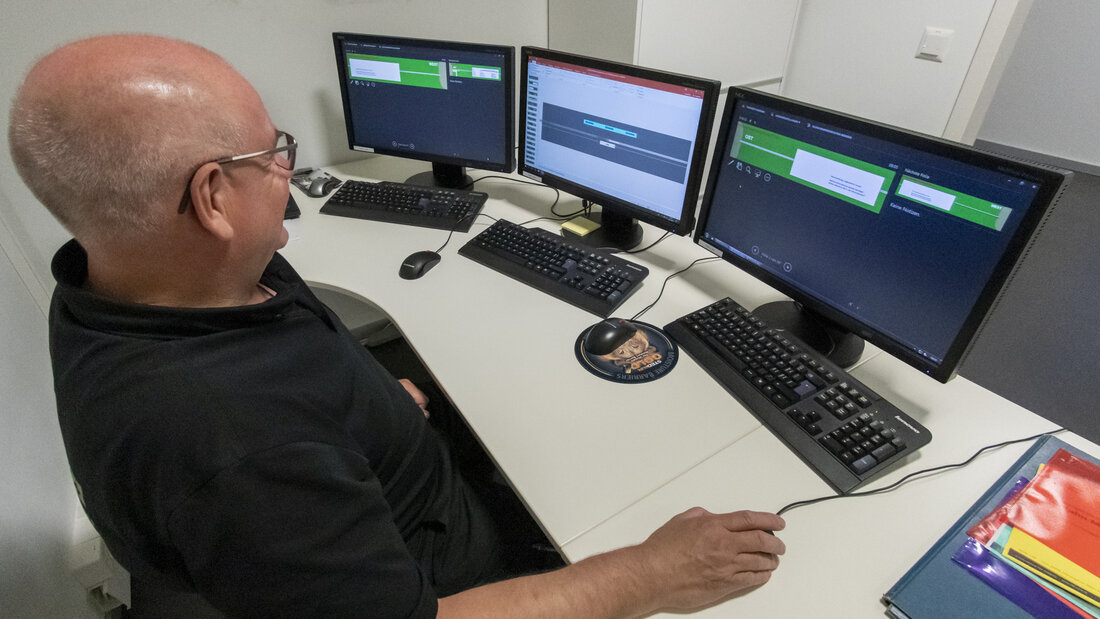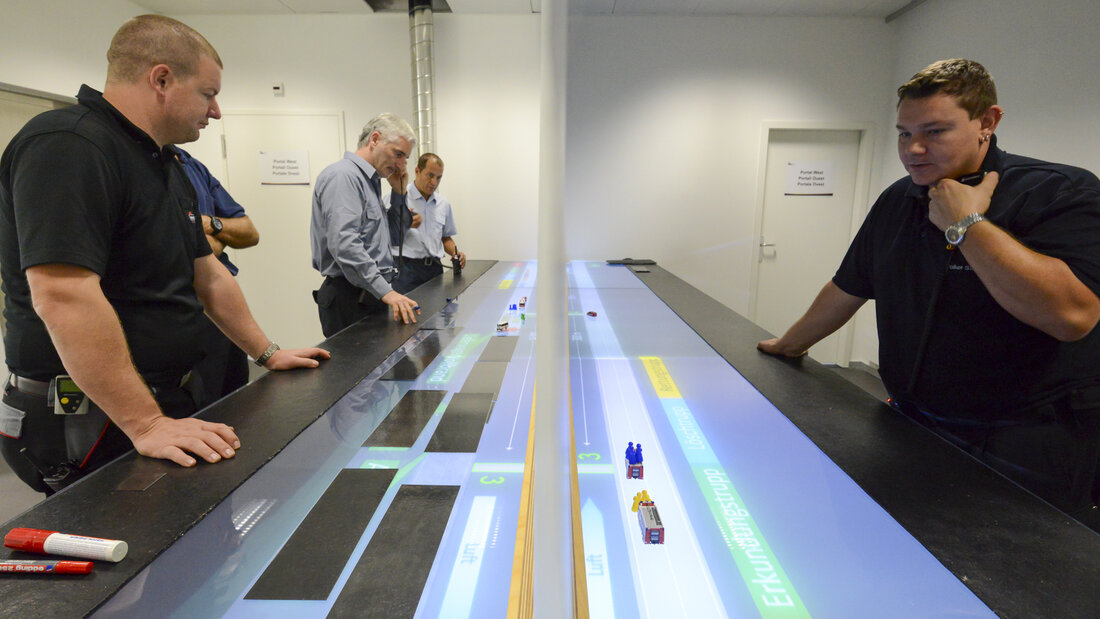The Tactics Centre of the International Fire Academy is used for the education and training of incident commanders. With the specially developed projection technology, all conceivable scenarios can be represented and played through by the course participants. A central topic of practice is always communication via radio.
I don't see you; you don't see me
One of the great challenges of operations in tunnels is the large spatial distance between the officers. They do not see each other and, in most cases, they cannot meet in one place for joint situation meetings. As a result, all communication between the operations management on both portal sides and the unit leaders in the tunnel must be carried out by radio. This requires high precision and concentration, which must be practised. That is why our Tactics Centre essentially consists out of four rooms that stand for the two portal zones, the interior of the tunnel and the fire service control centre, as well as for train courses for the operating centre of the railway company. Incidentally, the basic idea was developed in the mid-2000s by the fire service inspectorate of the canton of Basel-Landschaft by using a civil protection system with several large rooms for tabletop games.
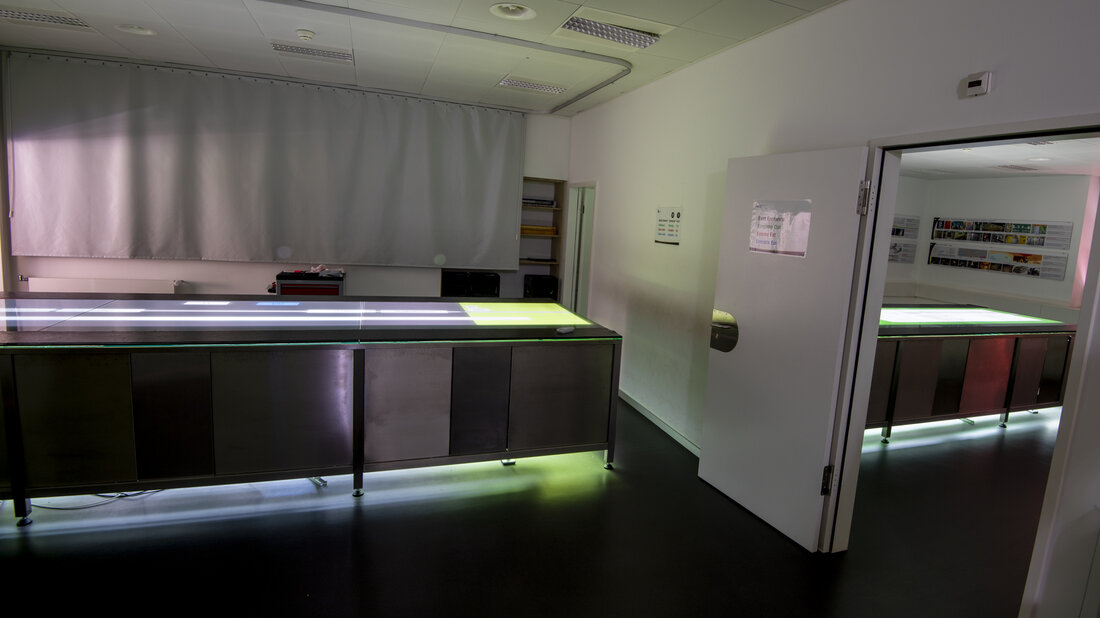
Light instead of paper
In the beginning, the plans with the tunnel tubes and portal zones were plotted on paper in order to outline the tactical measures with pens. The result was an immense consumption of paper and soon, an unmanageable amount of paper rolls. That is why the International Fire Academy, together with specialists in projection technology, developed the tactical tables used today. They consist of a support frame for three large glass plains, onto which the plans are projected from below using short-distance projectors. This allows for a virtually infinite variety of scenarios and a quick change between the different plans.


